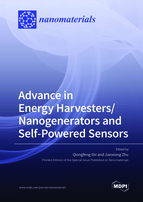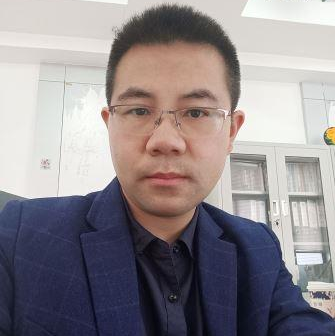Advance in Energy Harvesters/Nanogenerators and Self-Powered Sensors
A special issue of Nanomaterials (ISSN 2079-4991). This special issue belongs to the section "Nanoelectronics, Nanosensors and Devices".
Deadline for manuscript submissions: closed (31 August 2022) | Viewed by 35124
Special Issue Editors
Interests: energy harvesting; self-powered electronics; wearable electronics; MEMS; sensors
Special Issues, Collections and Topics in MDPI journals
Interests: human interface sensor; self-powered sensor; wearable sensor; digital twin; data confusion
Special Issues, Collections and Topics in MDPI journals
Special Issue Information
Dear Colleagues,
With the rapid development of the information industry and 5G networks, self-sustained devices and systems could dramatically benefit from energy-harvesting technologies (piezoelectric, triboelectric, electromagnetic, thermoelectric, pyroelectric, photovoltaic, etc.). In the past few years, energy-harvesting technologies have received significant research efforts from numerous research groups across the world, leading to in-depth innovation and rapid advancement in the field. Other than the development into energy harvesters and power sources, energy-harvesting technologies can also be adopted to develop diversified self-powered devices, ranging from physical sensors, chemical sensors, and IoT sensor nodes, all the way to functional interfaces, actuators, etc. Enabled by the innovative energy harvesters and self-powered devices, self-sustained and functional systems could eventually be realized, rendering a large variety of promising applications in the new era, such as smart homes, sports training, health care, medical rehabilitation, robotics, entertainment, and machine-learning-assisted intelligent systems for greater convenience of human life.
This Special Issue seeks to showcase research papers and review articles in this field and welcomes contributions devoted to the design, fabrication, characterization, integration, and application of energy harvesters, nanogenerators, and self-powered sensors and systems, with particular interest in flexible, wearable, and implantable technologies; human–machine interface; IoT; machine learning; big data; and other applications.
Dr. Qiongfeng Shi
Dr. Jianxiong Zhu
Guest Editors
Manuscript Submission Information
Manuscripts should be submitted online at www.mdpi.com by registering and logging in to this website. Once you are registered, click here to go to the submission form. Manuscripts can be submitted until the deadline. All submissions that pass pre-check are peer-reviewed. Accepted papers will be published continuously in the journal (as soon as accepted) and will be listed together on the special issue website. Research articles, review articles as well as short communications are invited. For planned papers, a title and short abstract (about 100 words) can be sent to the Editorial Office for announcement on this website.
Submitted manuscripts should not have been published previously, nor be under consideration for publication elsewhere (except conference proceedings papers). All manuscripts are thoroughly refereed through a single-blind peer-review process. A guide for authors and other relevant information for submission of manuscripts is available on the Instructions for Authors page. Nanomaterials is an international peer-reviewed open access semimonthly journal published by MDPI.
Please visit the Instructions for Authors page before submitting a manuscript. The Article Processing Charge (APC) for publication in this open access journal is 2900 CHF (Swiss Francs). Submitted papers should be well formatted and use good English. Authors may use MDPI's English editing service prior to publication or during author revisions.
Keywords
- Energy harvesters
- Piezoelectric nanogenerator
- Triboelectric nanogenerator
- Pyroelectric nanogenerator
- Thermoelectric generator
- Electromagnetic generator
- Power management
- Self-powered sensors
- Self-powered systems








